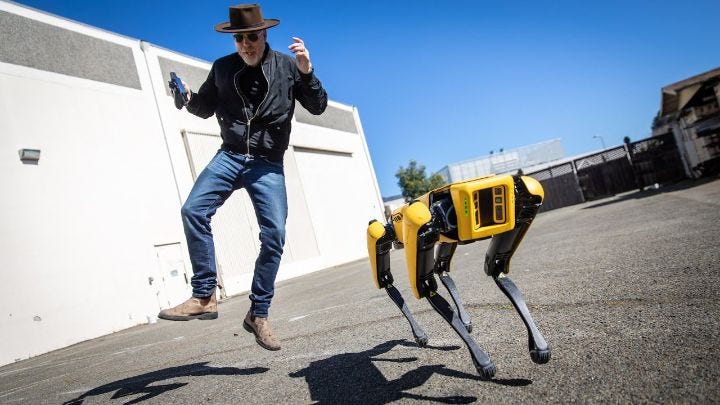H+ Weekly - Issue #253
View this email in your browser
This week - Adam Savage shows how Spot works; Sophia the Robot answers if AI is an existential threat to humans; how rejuvenation technology could help fight against COVID-19; and more!
MORE THAN A HUMAN
► Fourier's Exoskeleton helps Paralympic World Champion Walk Again (3:40)
Yao Fang, a former Chinese Paralympian world champion in wheelchair fencing, walks for the first time since a car accident in 1998 with the help of an exoskeleton.
► Aubrey de Grey - COVID19 - Fighting Infections with Rejuvenation Biotechnology (27:22)
Aubrey de Grey explains how rejuvenation technology could help people better cope with pandemics like the COVID-19 crisis we are dealing with right now. de Grey argues that such technology would be able to boost the immune system of older people and bring it back to the state of their prime time.
ARTIFICIAL INTELLIGENCE
► Ask Sophia the Robot: Is AI an existential threat to humans? (2:52)
Of course a humanoid robot will say AI is good, what did you expect.
Artificial intelligence is quietly disrupting the fragrance development process
AI is finding its way into every industry. Even the scent industry is being disrupted by AI with companies and startups using machine learning and customer reviews to create new scents, make the development process more efficient and push the bounds of creativity.
ROBOTICS
► How Boston Dynamics' Spot Robot Works (19:52)

Adam Savage shows how Boston Dynamics' Spot robot really works. It's nice to see what the robot can do and how do you control it from the user's perspective and not from Boston Dynamics staged demo. Spot even has a dance mode!
Here’s the Robot NASA Wants to Use to Hunt Aliens on Ocean Worlds
NASA has shown BRUIE - an autonomous robot that is busy doing trial runs in the Arctic and Antarctica but maybe one day it will explore the ocean on Jupiter's moon Europa and look for signs of life there.
Robots Learning to Move like Animals
Researchers from Berkley Artificial Intelligence Research lab demonstrate how they trained a four-legged robot to move like an animal from footage of real animals walking or running.
BIOTECHNOLOGY
► The next software revolution: programming biological cells (14:47)

If we can better understand how cells are programmed, we could unlock the ability to reprogram cells ourselves, says computational biologist Sara-Jane Dunn. In a talk from the cutting-edge of science, she explains how her team is studying embryonic stem cells to gain a new understanding of the biological programs that power life - and develop "living software" that could transform medicine, agriculture and energy.
“Punch Card” DNA Could Mean Cheaper High-Capacity Data Storage
One obstacle to making DNA data storage a reality is the slow, expensive and error-prone process of synthesizing new DNA sequences that fit a desired code. But there might be a solution to this problem. Instead of custom-synthesizing DNA from scratch, mark existing DNA molecules with patterns of “nicks” to encode data. This method was inspired by punch cards - a method used to store information in early computers.
Thank you for subscribing,
Conrad Gray (@conradthegray)
If you have any questions or suggestions, just reply to this email or tweet at @hplusweekly. I'd like to hear what do you think about H+ Weekly.
Follow H+ Weekly!



